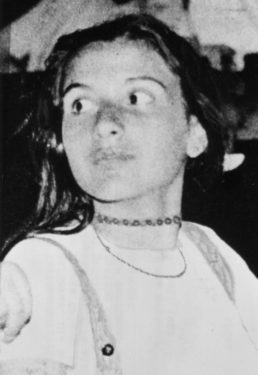
By Inés San Martín
ROME (Crux) – Thirty-six years after the disappearance of 15-year old Italian girl Emanuela Orlandi, the Vatican announced on Tuesday that two graves located in the German cemetery within Vatican grounds will be opened on July 11, following the allegations made by her family that her body is there.
“The decision is part of one of the files opened following a complaint of the family of Emanuela Orlandi that, as is known, in recent months has, among other things, reported the possible concealment of her body in the small cemetery located within the territory of the Vatican State,” the statement reads.
The order to open the graves came from the Vatican’s Promoter of Justice, Gian Piero Milano. It was issued June 27 and announced through a statement by the Vatican’s ad interim spokesperson, Alessandro Gisotti.
Relatives of Orlandi and of the people buried in the graves concerned will be present when the graves are opened, as will the head of the Vatican’s Gendarmerie, Domenico Giani.
The Vatican announced that the decision comes after preliminary investigations, during which Giani and the Officer of the Promoter carried in-depth studies aimed at reconstructing the judicial stages “of this long, painful and complex case.”
The statement also noted that the Vatican has no jurisdiction to actually investigate the case of Orlandi’s disappearance, as it happened in Italy, not in Vatican territory.
“Therefore, the Vatican initiative concerns only the verification of the possible burial of the body of Emanuela Orlandi in the territory of the Vatican State,” the statement reads.
The events to unfold on July 11 are “only the first phase of a series of already scheduled inspections,” which after opening the tombs and examining the remains, “will lead to appraisals to establish the dating of the findings and the DNA comparison.”
Orlandi has never been heard from since her disappearance in 1983, although alleged sightings are a common in Italy. Most Italians, however, believe Orlandi was killed, perhaps in connection with financial scandals surrounding the Catholic Church at the time, since her father was an employee of the Vatican Bank, known as the Institution for the Works of Religion.
The tip that the body could be within the Vatican walls was sent in an anonymous letter last summer to the lawyer of the Orlandi family, Laura Sgrò. It showed a picture of a tomb in the German cemetery with an angel above it is holding a paper that reads “Requiescat in Pace” or “Rest in Peace.” The note only said, “search in the spot where the angel is pointing.”
According to rumors and local reporters, for years fresh flowers have been placed over this tomb, because some believe it to be the final resting place of the young Orlandi.
“I wait to have an immediate meeting with Vatican authorities to gather more information,” Sgrò said. “A sincere and heartfelt thank you to the Vatican’s Secretary of State, Cardinal Pietro Parolin, for this brave act.”
Last fall, there was a mini-ferment of the case when portions of human skeletons were discovered on the grounds of the Vatican embassy to Italy, prompting speculation that perhaps it was Orlandi. Although precise identification proved impossible due to deterioration, investigators said the remains were at least 100 years old.
Despite setbacks, Orlandi’s family has never stopped looking for her over the decades, often appearing in newspapers and on TV asking for answers for what is probably one of the greatest “Gialli,” the Italian slang for sensational mysteries, in recent Italian history. July 11 will provide yet another capter in the ongoing saga, and the family hopes it will be the final one.
“I’m glad, finally a decision has been made in our favor,” Pietro Orlandi, the brother of the disappeared girl, told local news agency ANSA on July 2. “I thank the Vatican for the attention and willingness to bring clarity.”
